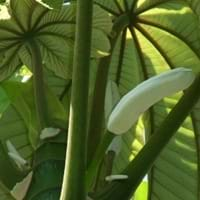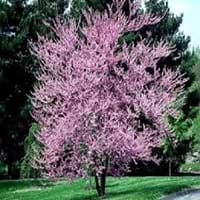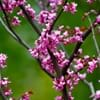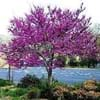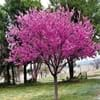Life Span
Perennial
Perennial
Origin
Caribbean, South America
Northeastern United States, Mid-Atlantic United States, Southeastern United States, North-Central United States, Central United States, South-Central United States, Canada
Types
Not Available
Not Available
Habitat
Primary Rainforest, Riverbanks, subtropical regions, Tropical regions
Alpine Meadows, shaded woods
USDA Hardiness Zone
10-15
4-9
Sunset Zone
H1, H2, 22, 23, 24
1a, 1b, 2a, 2b, 3a, 3b, 7, 8, 9, 10, 11, 12, 13, 14, 15, 16, 17, 18, 19, 20
Habit
Upright/Erect
Oval or Rounded
Flower Color
Light Yellow, Light Green, Ivory
Red, Purple, Violet
Flower Color Modifier
Bicolor
Bicolor
Fruit Color
Ivory
Brown, Chocolate
Leaf Color in Spring
Green
Purple, Plum
Leaf Color in Summer
Green
Green, Dark Green
Leaf Color in Fall
Green
Yellow, Yellow green
Leaf Color in Winter
Green
Not Available
Leaf Shape
Circular and deeply palmately-lobed
Heart-shaped
Plant Season
Spring, Summer, Fall, Winter
Spring, Summer, Fall
Sunlight
Full Sun, Partial Sun
Full Sun, Partial Sun
Growth Rate
Very Fast
Medium
Type of Soil
Loam, Sand
Clay, Loam, Sand
The pH of Soil
Acidic, Neutral, Alkaline
Acidic, Neutral, Alkaline
Soil Drainage
Well drained
Well drained
Bloom Time
Indeterminate
Early Spring, Spring, Late Spring
Tolerances
Not Available
Drought
Where to Plant?
Ground
Ground
How to Plant?
Seedlings
Cuttings
Plant Maintenance
Medium
Medium
Watering Requirements
Average Water Needs
Keep the ground moist but not water-logged
In Summer
Lots of watering
Lots of watering
In Spring
Moderate
Moderate
In Winter
Average Water
Average Water
Soil pH
Acidic, Neutral, Alkaline
Acidic, Neutral, Alkaline
Soil Type
Loam, Sand
Clay, Loam, Sand
Soil Drainage Capacity
Well drained
Well drained
Sun Exposure
Full Sun, Partial Sun
Full Sun, Partial Sun
Pruning
Remove damaged leaves, Remove dead branches, Remove dead leaves
Prune to stimulate growth, Remove damaged leaves, Remove dead branches, Remove dead leaves
Fertilizers
All-Purpose Liquid Fertilizer
All-Purpose Liquid Fertilizer
Pests and Diseases
Not Available
Bacterial Canker, Verticillium Wilt
Plant Tolerance
Drought
Drought
Flowers
Insignificant
Showy
Flower Petal Number
Not Available
Single
Foliage Texture
Bold
Medium
Foliage Sheen
Matte
Glossy
Attracts
Birds, Fruit Bats
Birds
Allergy
Antibacterial, Anti-inflammatory
Unknown
Aesthetic Uses
Not Used For Aesthetic Purpose
Beautification, Formal Garden, Ground Cover, Showy Purposes
Beauty Benefits
Not Available
Not Available
Environmental Uses
Air purification
Air purification, Food for animals, Food for birds, Nesting sites for birds
Medicinal Uses
Antidiabetic, Asthma
Unknown
Part of Plant Used
Bark, Fruits, Latex, Leaves
Not Applicable
Other Uses
Used in making tea, Used in pies, cakes
Beneficial species for attracting pollinators, Used as Ornamental plant
Used As Indoor Plant
No
No
Used As Outdoor Plant
Yes
Yes
Garden Design
Edible, Feature Plant, Fruit / Fruit Tree, Mixed Border, Shade Trees, Tropical
Feature Plant, Foundation, Mixed Border, Shade Trees
Botanical Name
CECROPIA palmata
CERCIS canadensis 'Forest Pansy'
Common Name
Snakewood Tree
Eastern Redbud, Forest Pansy Redbud
In Hindi
Snakewood Tree
Forest Pansy Redbud
In German
Schlangenholz -Baum
Forest Pansy Redbud
In French
Amourette Arbre
gainier du Canada
In Spanish
Árbol de madera de serpiente
Cercis canadensis
In Greek
Snakewood Tree
Forest Pansy Redbud
In Portuguese
Snakewood Tree
Forest Pansy Redbud
In Polish
Snakewood Tree
Judaszowiec kanadyjski
In Latin
Snakewood Tree
Forest Pansy Redbud
Phylum
Angiosperms
Spermatophyta
Class
Eudicotyledoneae
Magnoliopsida
Family
Urticaceae
Fabaceae
Clade
Angiosperms, Eudicots, Rosids
Angiosperms, Eudicots, Rosids
Tribe
Not Available
Not Available
Subfamily
Not Available
Not Available
Number of Species
Not Available
Season and Care of Snakewood Tree and Forest Pansy Redbud
Season and care of Snakewood Tree and Forest Pansy Redbud is important to know. While considering everything about Snakewood Tree and Forest Pansy Redbud Care, growing season is an essential factor. Snakewood Tree season is Spring, Summer, Fall and Winter and Forest Pansy Redbud season is Spring, Summer, Fall and Winter. The type of soil for Snakewood Tree is Loam, Sand and for Forest Pansy Redbud is Clay, Loam, Sand while the PH of soil for Snakewood Tree is Acidic, Neutral, Alkaline and for Forest Pansy Redbud is Acidic, Neutral, Alkaline.
Snakewood Tree and Forest Pansy Redbud Physical Information
Snakewood Tree and Forest Pansy Redbud physical information is very important for comparison. Snakewood Tree height is 850.00 cm and width 40.00 cm whereas Forest Pansy Redbud height is 760.00 cm and width 760.00 cm. The color specification of Snakewood Tree and Forest Pansy Redbud are as follows:
Snakewood Tree flower color: Light Yellow, Light Green and Ivory
Snakewood Tree leaf color: Green
Forest Pansy Redbud flower color: Red, Purple and Violet
- Forest Pansy Redbud leaf color: Purple and Plum
Care of Snakewood Tree and Forest Pansy Redbud
Care of Snakewood Tree and Forest Pansy Redbud include pruning, fertilizers, watering etc. Snakewood Tree pruning is done Remove damaged leaves, Remove dead branches and Remove dead leaves and Forest Pansy Redbud pruning is done Prune to stimulate growth, Remove damaged leaves, Remove dead branches and Remove dead leaves. In summer Snakewood Tree needs Lots of watering and in winter, it needs Average Water. Whereas, in summer Forest Pansy Redbud needs Lots of watering and in winter, it needs Average Water.
